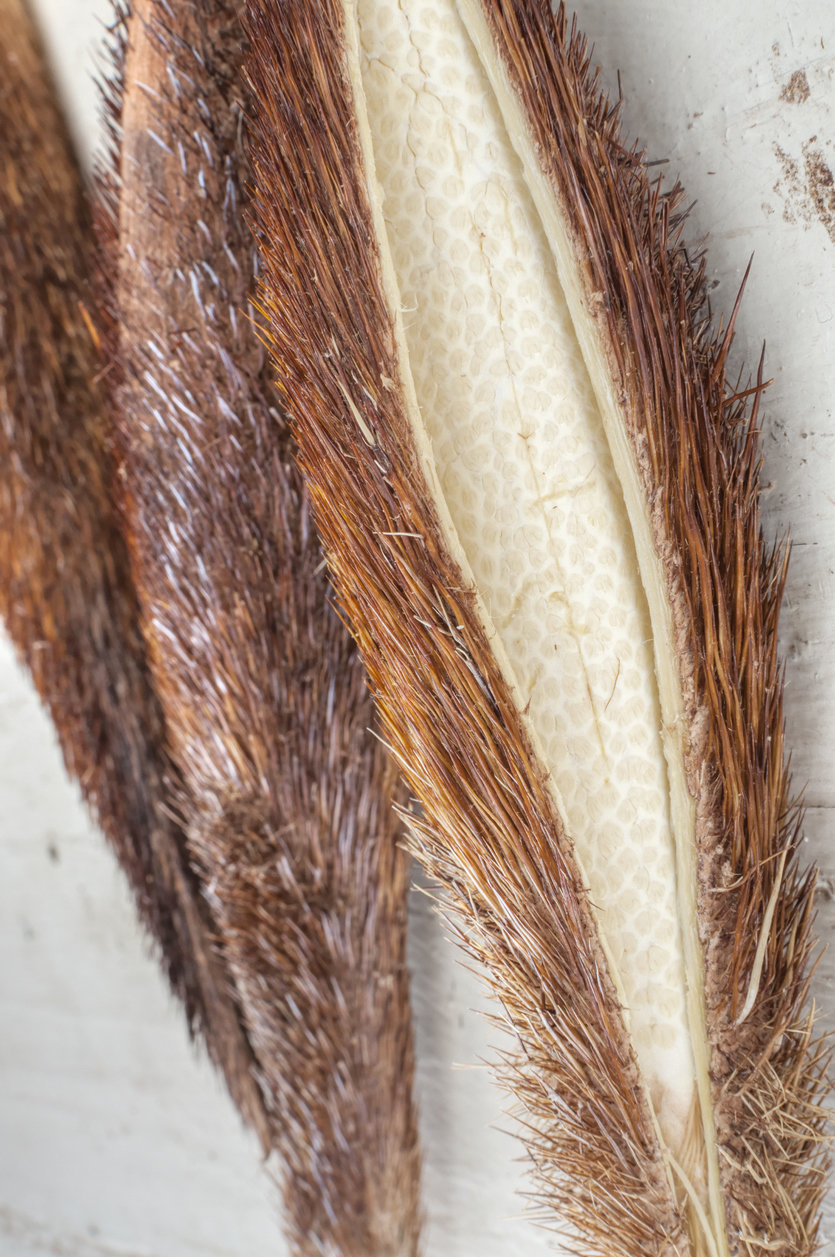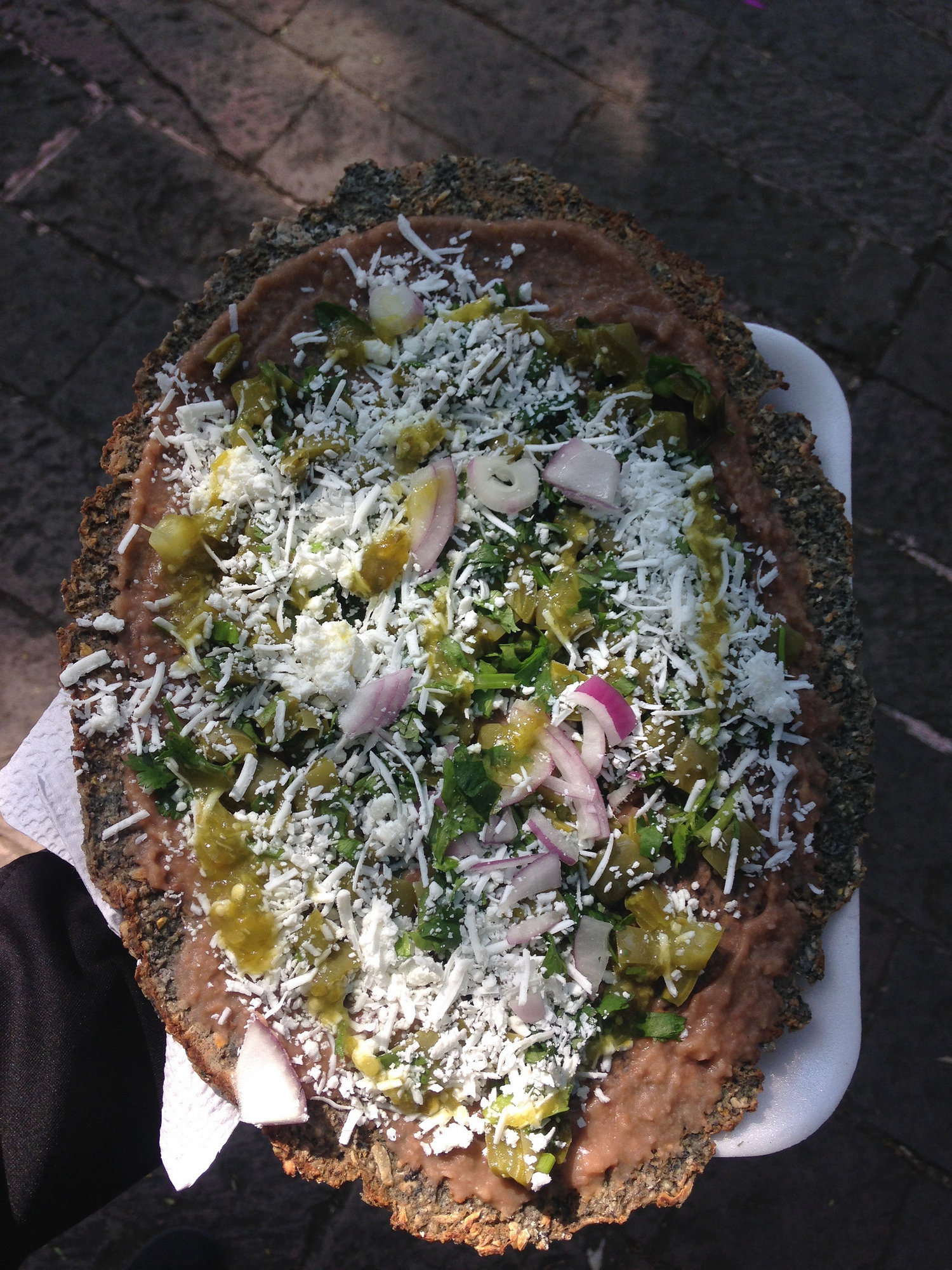
Mexico is a vast country with many regions and, therefore, it is rich in regional cuisines. Mexican food from one area of the country can be completely different than the Mexican food in other parts, which is why there are so many Mexican foods that many of us have never tried or even heard of. We've rounded up some not so common Mexican foods that might be thought of as "crazy" by those who haven't grown up eating them.
More from MamásLatinas: Top 20 Latin food blogs you should bookmark
Some of these foods are very common in certain areas of Mexico, but they aren't particularly popular outside of those areas and many have yet to gain popularity in the United States. That's not to say that they aren't delicious and worthy of wider recognition.
Most of these foods have yet to make it onto the menu of your favorite Mexican restaurant, but it's important to note that some of these delicacies have been around since pre-Hispanic times and are deeply rooted in the diets and histories of the people of Mexico. Check them out and see just how many of them you are familiar with.
Behold, a steaming bowl of caldo de piedra.
Stone soup dates back to pre-Hispanic times. It's a Oaxacan fish soup that is cooked with hot rocks.
Chapulines are commonly eaten in certain areas of Mexico.

Toasted grasshoppers are a staple of Oaxacan diets. You can enjoy them as a snack, use them as a topping or enjoy them as a main dish.
Chayotes are edible gourds.

Think of them like a squash. Native to Mexico they are mild in flavor and even though they are a fruit, they're served and prepared more like a vegetable.
Chicatanas are flying ants that get toasted.
Toasted chicatanas are a great snack on their own or can be sprinkled on top of other meals. Chicatanas are also combined with other ingredients to make a salsa.
Those worms you've seen in Mezcal bottles.
You know the worms you've seen inside of some Mezcal bottles? Those are chinicuiles. They are also known as maguey worms because they infest the roots of maguey plants. They are high in protein and can be eaten alive, fried or roasted.
This little piggy is delicious.

Cochinita piblil is a traditional pork dish from the Yucatán Peninsula. The pork is wrapped in banana leaves and slow-roasted in an oven that is dug in the ground and lined with stones.
Huitlacoche is an edible fungus that grows on corn.

You can call it huitlacoche, corn smut, corn mushroom or Mexican truffle. It is rare and only grows on organic corn. You can eat it or prepare it the way that you would mushrooms.
Costras are like cheese scabs.
Scabs are gross and you wouldn't want to eat them, but crusted up cheese is a whole other story. Costras are made from cheese that is heated on a griddle and then scrapped off and wrapped around whatever you want.
Criadillas de toro are a bull's family jewels.
Yup, they are the testicles of a bull and can be prepared any number of ways. You can grill them, batter them, broil them, you name it.
Escamoles are ant larvae.

The larvae are harvested from the roots of agave plants. They can be pan-fried with butter and herbs. You can eat them on their own or add them to omelets or tacos if you like.
Guanábana is a tropical fruit also known as soursop.

It is native to the tropical regions of the Americas and Carribean. The seeds are not edible. The edible white pulpy flesh is used in juices, smoothies, ice creams, popsicles and any number of treats
Popular in the Yucatán Peninsula huayas grow in bunches on trees.
They are often compared to lychee. Green on the outside, they have a large seed that is surrounded by peachy-colored flesh. You eat the flesh, not the seed. They can also be used to make jams.
Jicama isn't all that obscure anymore.

It's a root vegetable that is often sold sprinkled with lime and powdered chile by street vendors in Mexico. It tastes great on its own and makes a welcome addition to salads. It's becoming more and more popular in the U.S. and you can easily find it in many supermarkets.
Chapaya is a fruit with a meaty flavor.

Once it is harvested and the spiky exterior of this palm fruit is removed, it can be roased or pan-fried. It ends up having a meaty-like texture and flavor.
Zapotes grow on the trees that chicle comes from.

The zapote tree produces the gummy substance called chicle that is used to make gum. The fruit of the tree has a tough outer rind. The flesh on the inside is a beautiful vibrant orange color and there are seeds in the middle. You can eat the fruit as is or blend it with milk for a refreshing drink.
Maracuyá also known as passion fruit is a citrus fruit.

It's full of vitamin C. You can eat it raw or use it in drinks and dessert recipes as well.
Pambazo is as fun to say as it is to eat.

Pambazo! The word has got a certain panache, no? So does the sandwich. A pambazo is a guajillo salsa-dipped sandwich usually filled with chorizo and potatoes.
Pay de elote is a sweet custardy delight.

It's made of cream, condensed milk, eggs, sugar, vanilla and corn kernels. Doesn't it sound delish? Yes, it does!
Pejelagarto is popular in Tabasco, Mexico.

It's a freshwater garfish with an elongated jaw that kind of makes it look like a cross between an alligator and a fish. It is eaten in soups as well as grilled or cooked on the stove.
Pitaya is a beautiful cactus fruit.

Indigenous to the Americas, it is also referred to as dragon fruit. It kind of tastes like a cross between a pear and a kiwi. You can eat it as is when ripe or add it to smoothies.
Don't rim your tequila glass with salt.

Rim it with worm salt, which as the name suggests has worms in it. Sal de gusano has a spicy, smokey and salty flavor.
Salsa de jumiles is made with stink bugs.
Jumiles are stink bugs that are native to the state of Guerrero on Mexico's Pacific coast. They are smaller than grasshoppers and larger than ants. They can be ground in a molcajete and combined with tomatoes and chiles to make a salsa.
Arab-style tacos are very popular in Puebla, Mexico.

It is believed that in the 1930s Middle Eastern immigrants came to Puebla after the First World War and brought with them the tradition of serving spit-roasted lamb on pita A.K.A. pan árabe. Somewhere along the line, pork replaced lamb on pita and thus tacos árabes came to be.
Sopa Azteca is a sensational tortilla soup.

No one knows where the soup originated, but it is popular around Mexico City. It contains fried strips of corn tortillas in a tomato, onion and garlic broth with chile de arbol and epazote. It is served with chicharrones, cheese, pasilla chiles and crema.
Brains are a very popular taco filling.

Tacos de sesos are made from cow or goat brains. The brains have a very soft texture that appeals to many.
Tikin xic is a traditional Yucatán fish dish.
The whole fish is marinated with achiote and sour oranges and wrapped in banana leaves. It is cooked in an oven dug in the ground.
Mexico's prickly pear cactus fruits are called tunas.

Once you get past the thorns, the inside of tunas are delicious and can be eaten as is or used to make jams.
Tlayudas get called Mexican pizza a lot.

They don't taste like pizza, though. They are a popular Oaxacan street food made out of a crispy thin tortilla that has been baked on a comal, then covered with beans and other toppings.
Nanches resemble cherries but taste nothing like them.
They're small, yellow and have pits. They can be candied or used to make liqueur or flavor ice cream. They have a very distinct flavor and pungent odor that is all their own.
Huazontle is an edible plant native to Mexico.
It grows in upright branches with little buds that kind of look like baby broccoli buds. The stems and buds can be boiled, drained, then battered and fried.
Pin It!

Add this graphic to your Pinterest boards to find out Mexican foods you've never heard of!




